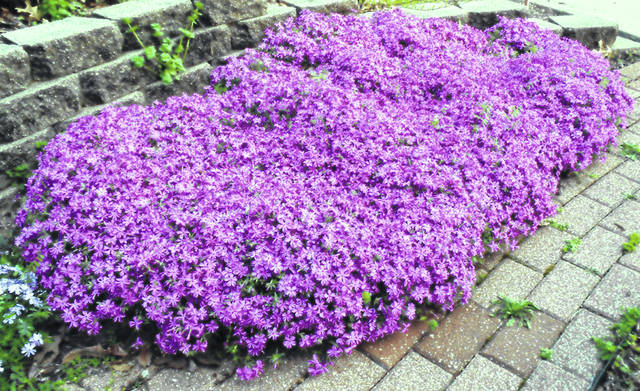

One of the first signs of spring is the colorful billows of creeping Phlox in light blue, white and all shades of pink, creeping along rock gardens and slopes.
Creeping Phlox is a hardy, dependable groundcover plant that is widely used in rock gardens, and to suppress weeds on hard-to-mow slopes.
Creeping Phlox is an evergreen, making it ideal as a dense groundcover and for draping over walls and stones. Phlox prefers moist, well-drained soils but it’s very adaptable and forgiving.
You can create a healthy carpet of Phlox by simply working some Plant Tone and peat into the soil in your planting hole and then mulching heavily around the area. The plant will spread and take root in the mulch, gradually expanding the clump until it covers a wide area.
In order to establish Creeping Phlox as a groundcover for suppressing weeds, you need to mulch generously for the first few years, or weeds and grass will get established and will be very hard to control.
Another important step is to edge the planting bed every year, so that lawn grass doesn’t creep into your Phlox planting. There’s no way to kill lawn grasses in groundcover beds, and if it’s allowed to go to seed, grass will ruin the phlox groundcover and you’ll have to start completely over.
The answer is to cut out a strip of sod along the bed edge, making sure to get all the grass roots out from under the phlox mat.
Sprinkle some Preen on the bare dirt along the bed edge, to catch weeds as they sprout. Next, mulch heavily (at least three inches thick), working the mulch up under the phlox.
Gardeners typically look for “flats” or multiple packs of small Phlox plants when they want to use it for groundcover. This is not the best way to get a healthy stand quickly.
It’s much more effective to plant a single large plant, preferably a gallon pot full of roots. The mature root system will encourage the plant to quickly spread up to three feet in a single season, with dense thick foliage that smothers and discourages weeds underneath.
You can further encourage spreading by trimming the plant back during the fall or winter months.
Lifting the edges of the clump, trim around the edges, cutting off the part that hasn’t rooted yet, one-third of even half of the total plant. Sprinkle a cup or two of balanced fertilizer (Espoma Plant Tone or Flower Tone works well) around the plant.
Using a good mulch definitely helps; dead mulches like Cypress or dyed mulch don’t feed the plant nearly as well as pine bark or composted hardwood.
Dividing Phlox too soon will slow down the plants. Remember that a big, healthy root system is the key to success. When planting, treat that pot full of roots they way you would a shrub.
Dig a wide hole for it, mix fertilizer and peat, and mulch heavily.
You’ll be surprised how soon you have a huge carpet of showy flowers that gets larger every spring.
Steve Boehme is a landscape designer/installer specializing in landscape “makeovers”. “Let’s Grow” is published weekly; column archives are on the “Garden Advice” page at www.goodseedfarm.com. For more information is available at www.goodseedfarm.com or call GoodSeed Farm Landscapes at (937) 587-7021.



